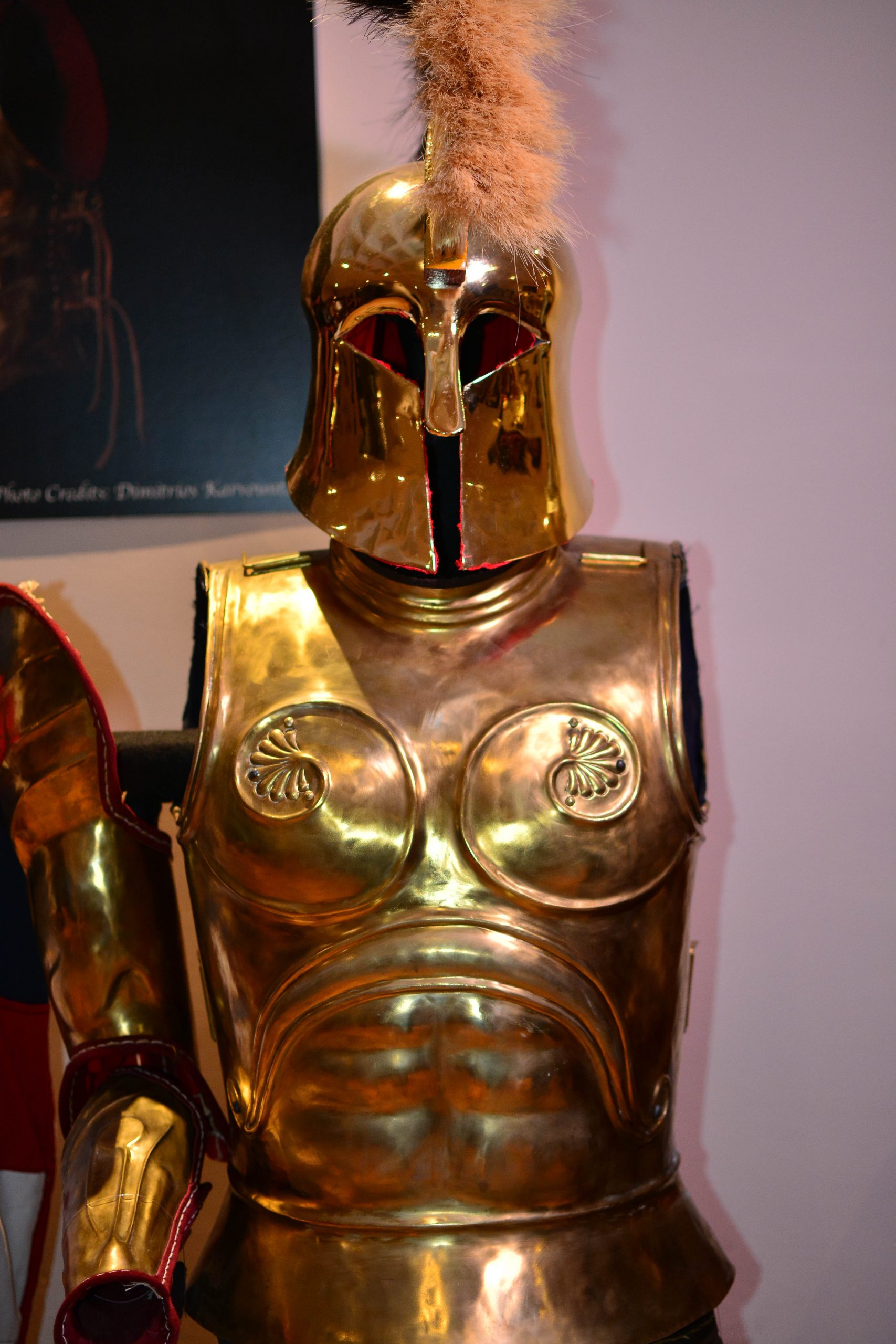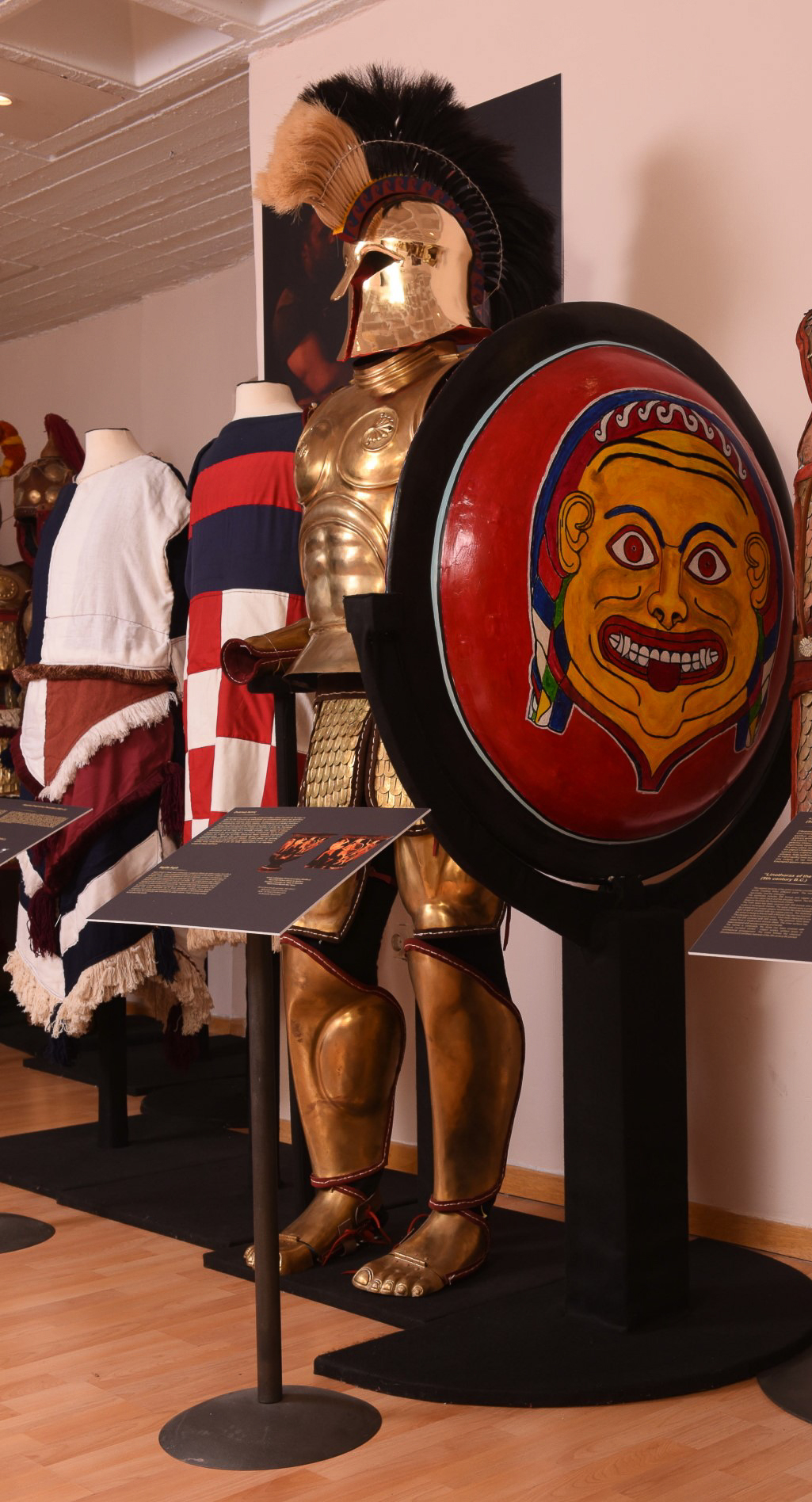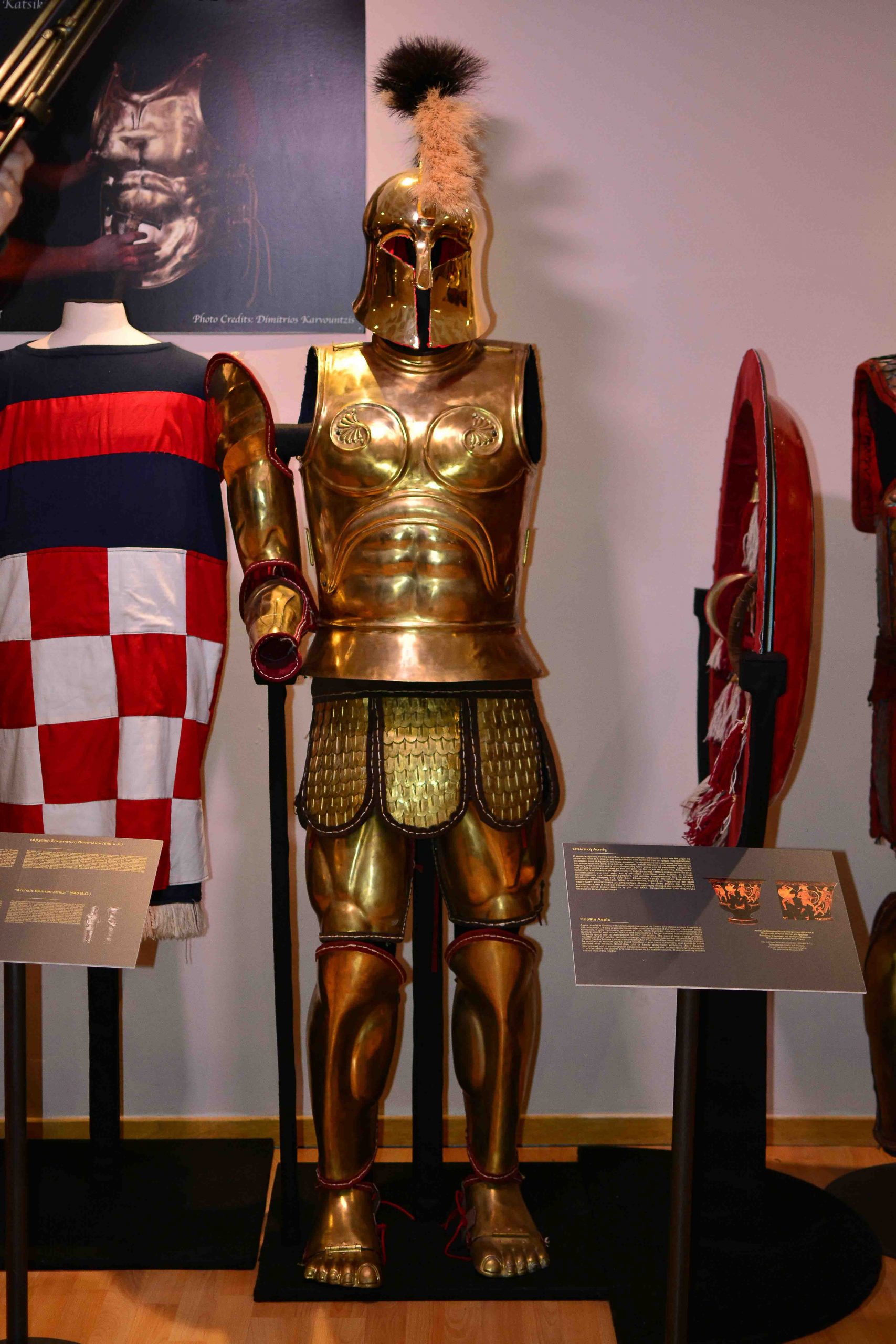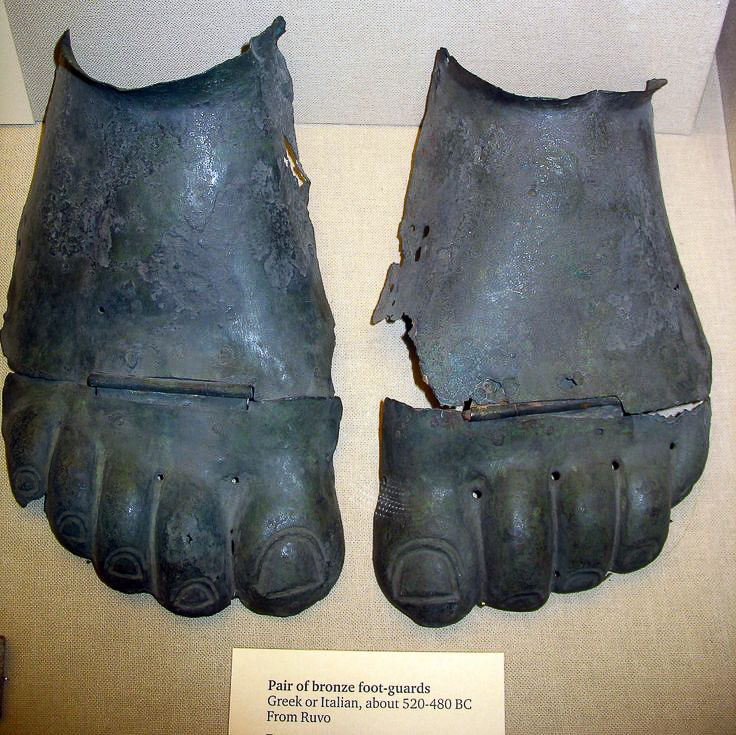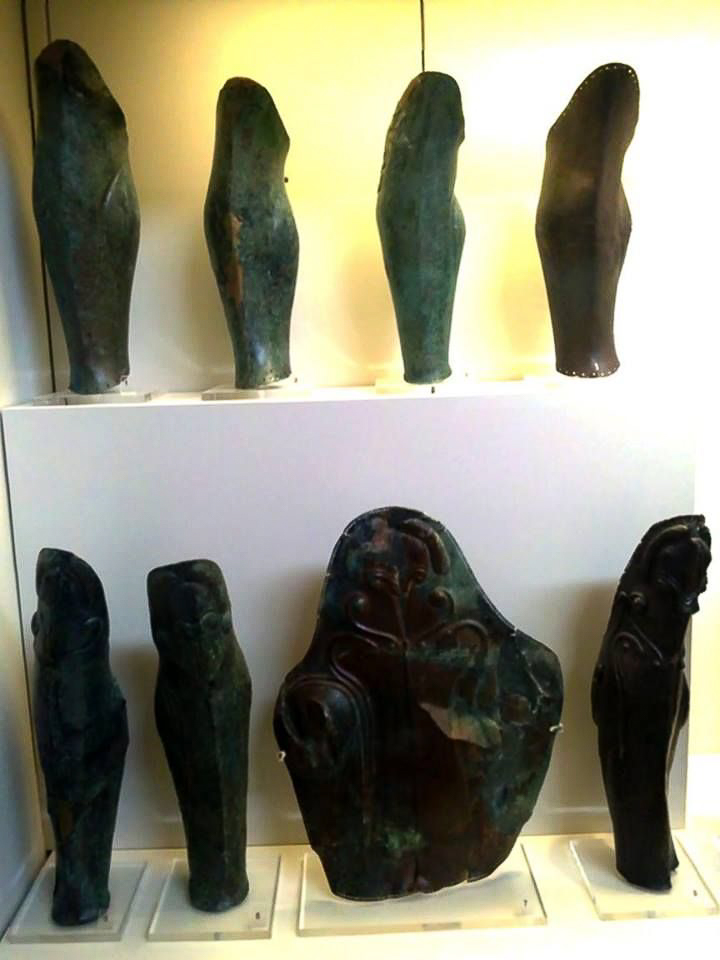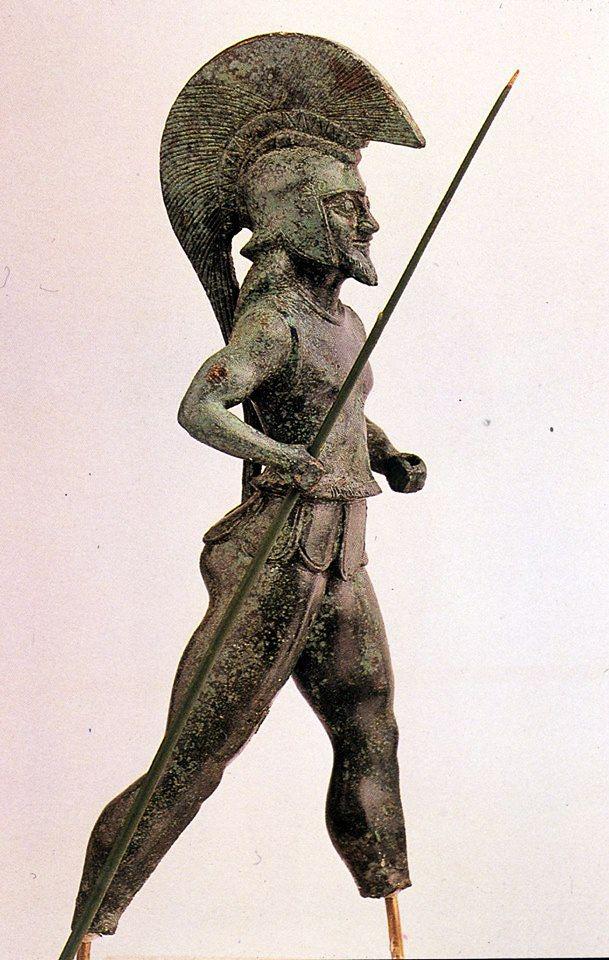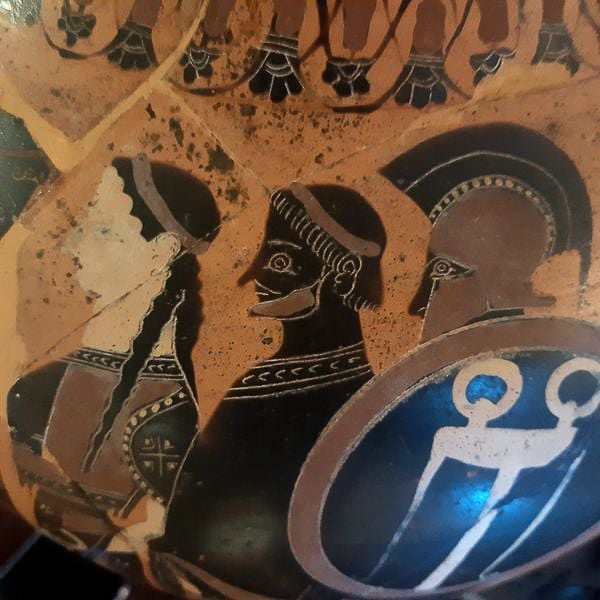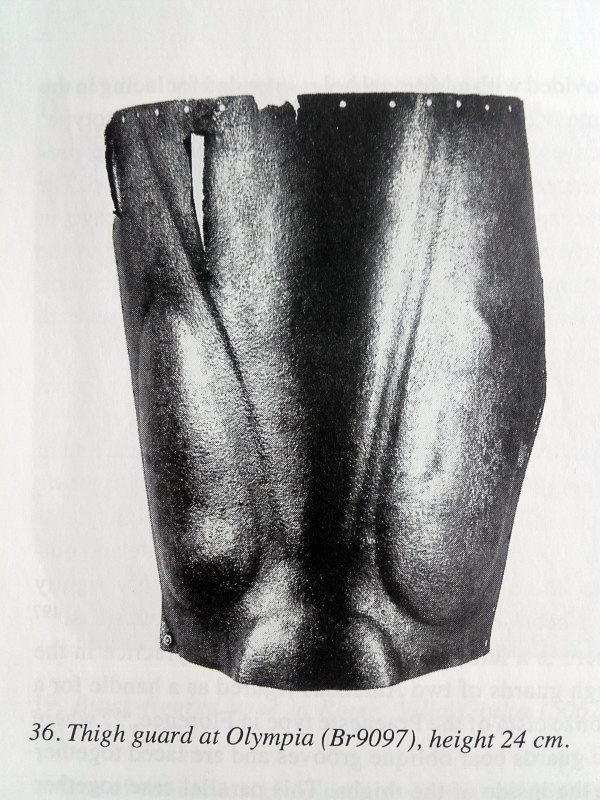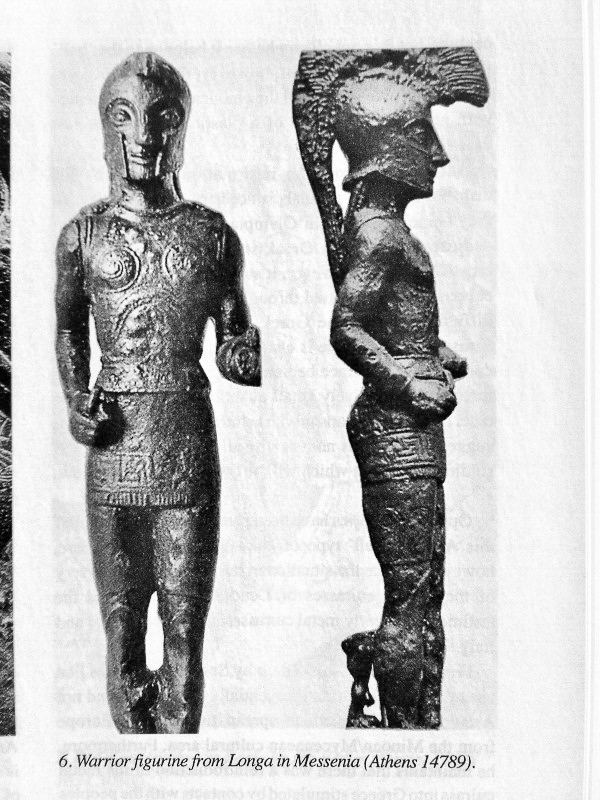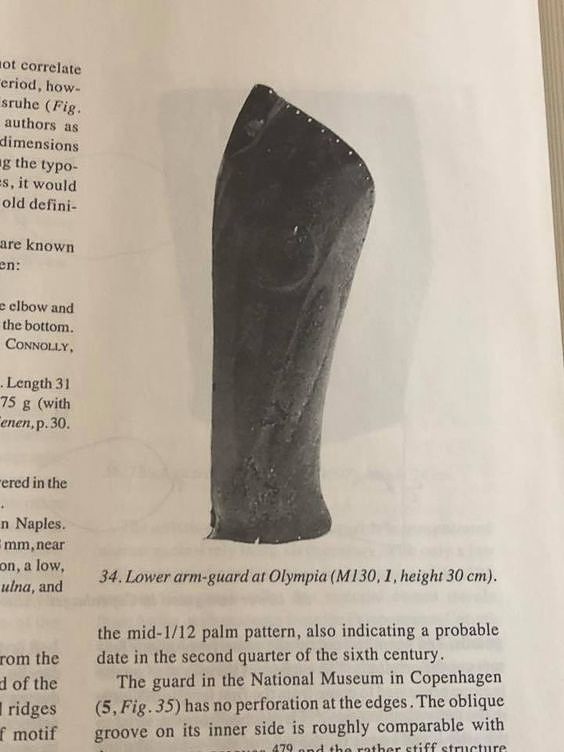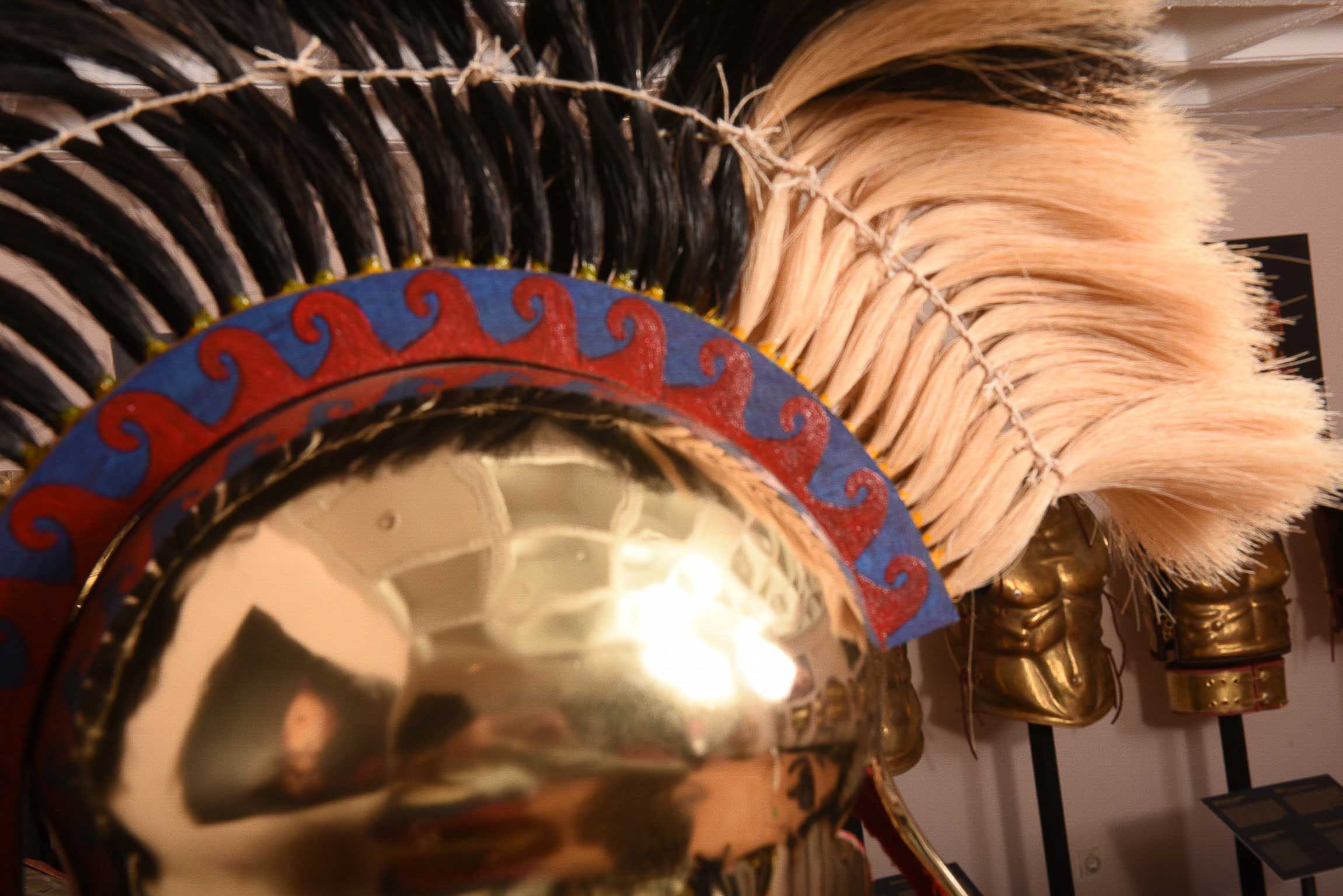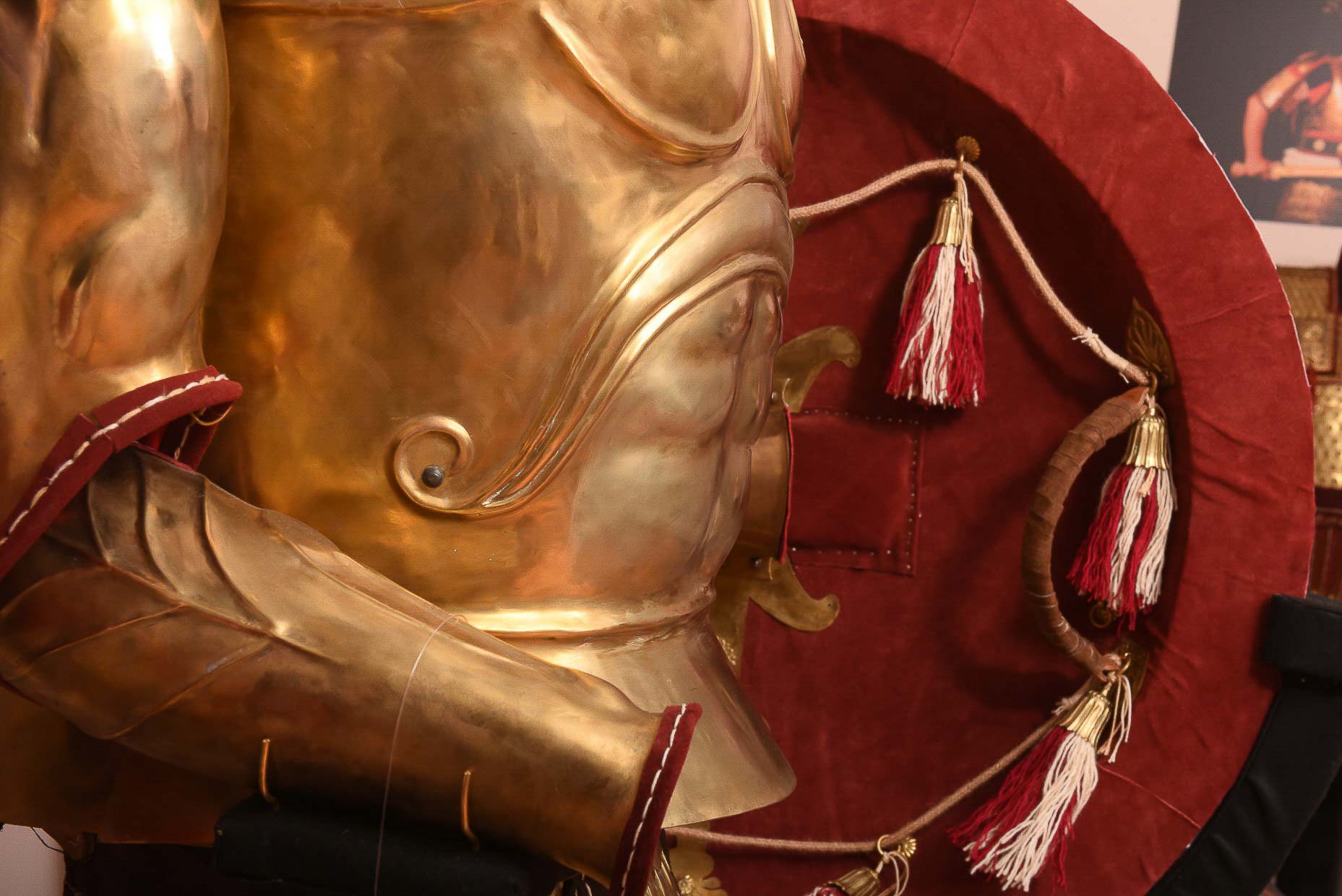Ancient Greek Armors
Ancient Spartan Armor
(Αrchaic Period: 540-520 B.C).
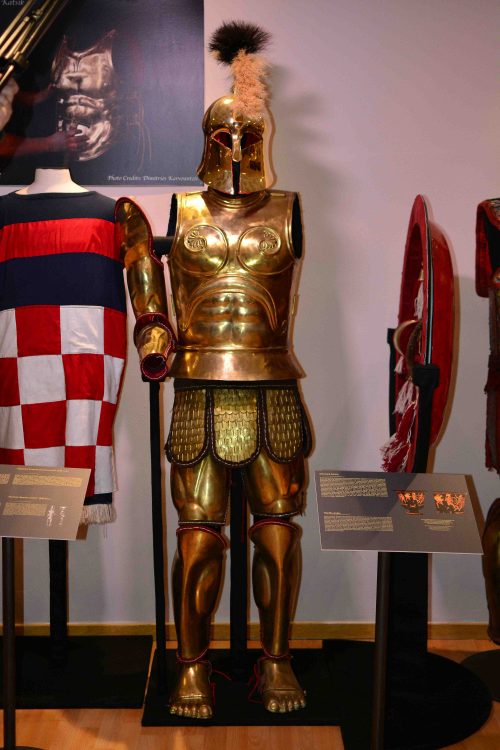
Τhe set has been based on a bronze Spartan hoplite figurine found in the Temple of Apollo in todays village Longa in Messinia(Peloponnese,Greece) , it was excavated back to 1915. The find was dated at the middle of the 6th century BC (540-520 BC) and according to the archaeologists during the period when the statuette was commissioned, the temple was under the control of the Spartans after they had already emerged victorious from the Second Messinian war (685-668 BC).
After a careful study of the figurine, we conclude that the hoplite wears a Corinthian Helmet of archaic style with rich plume, a bell-shaped cuirass(bearing all the anatomical features of the “Kouros” statues ), anatomical thigh protections and anatomical greaves.
The reproduction of the bell-shaped chest was based on the example of the figurine.We can see the formations of the abdominal, the thoracic arch with its three parallel arch -like lines, the pectoral spirals, the horizontal visor with a downward incline. The cuirass is being consisted by two parts, the frontal and the radial respectively. The two pieces are hold together with pairs of hinges located in the underarm and the shoulder areas. The inner padding is been consisted by wool and textile(linen) elements.
The helmet has been raised by a circular piece of bronze sheet with a diameter of 60 points and a thickness up to 1.2 millimeters. With successive pass of hammer blows, the sheet gradually took its final concave shape. The opening of the eye holes was done by removing the material after it’s finalization. It is decorated with a rich elongated plume of natural horse hairs,carefully attached on an anatomical wooden base.
The scaled protection under the cuirass which covers the lower abdomen and the upper part of the thighs is being consisted by six leaf like arrangement and it has based on a Archaic Hoplite bronze figurine , today displayed at the Archaeological Museum of Dodoni (North Greece). The scaled belt set on place by leather suspenders. As an alternative, It could have been made only of leather without any metal reinforcements.
The lower part of the thighs is covered by anatomical bronze plates which are fastened to the legs with leather straps , from the inside wool and linen padding it has placed while all their edges are covered by leather directly sewn onto the metal. This very development of the anatomy imitates the thighs of the “Kouros” type statues. The original thigh guard can be found on the archaeological Museum of Olympia.
The greaves are of an anatomical type, crafted from a single piece of metal and they are held in place only by the pressure of the lateral walls. The inner side have been covered with wool and linen lining, while folded leather covers all the edges of the bronze plate. Archaic period greaves from the Museum of Ancient Olympia served as a paradigm for the recreations.
Feet guards are not visible on the figurine, they were added by the creator in order to complete the leg protection. They are based on a pair of anatomical tarsal guards that are currently on display in the British Museum. They mimic the human morphology to an exreme level.Their main body is connected to the front part of the toes with a hinge system. They are attached to the feet with leather straps.
Based on the figurine, an bronze anatomical vambrace covers the right forearm and its total length is 30 cm (corresponds to a man of 1.85 meters height). The bronze anatomical armband covers the upper arm and it is characterized by its highly artistic plasticity, it has also based on an archaeological find displayed on the Museum of Ancient Olympia. In both guards, the inside surfaces have been covered with wool and linen.
We have to assume that heavy equiped Hoplites like the above were placed on the frontal lines and were called “Promahoi”, the costs of such defensive gears was very high and was covered by the citizens themselves.
The left side was covered by a Aspis , a wooden circular shield of 90 cm of diameter.
